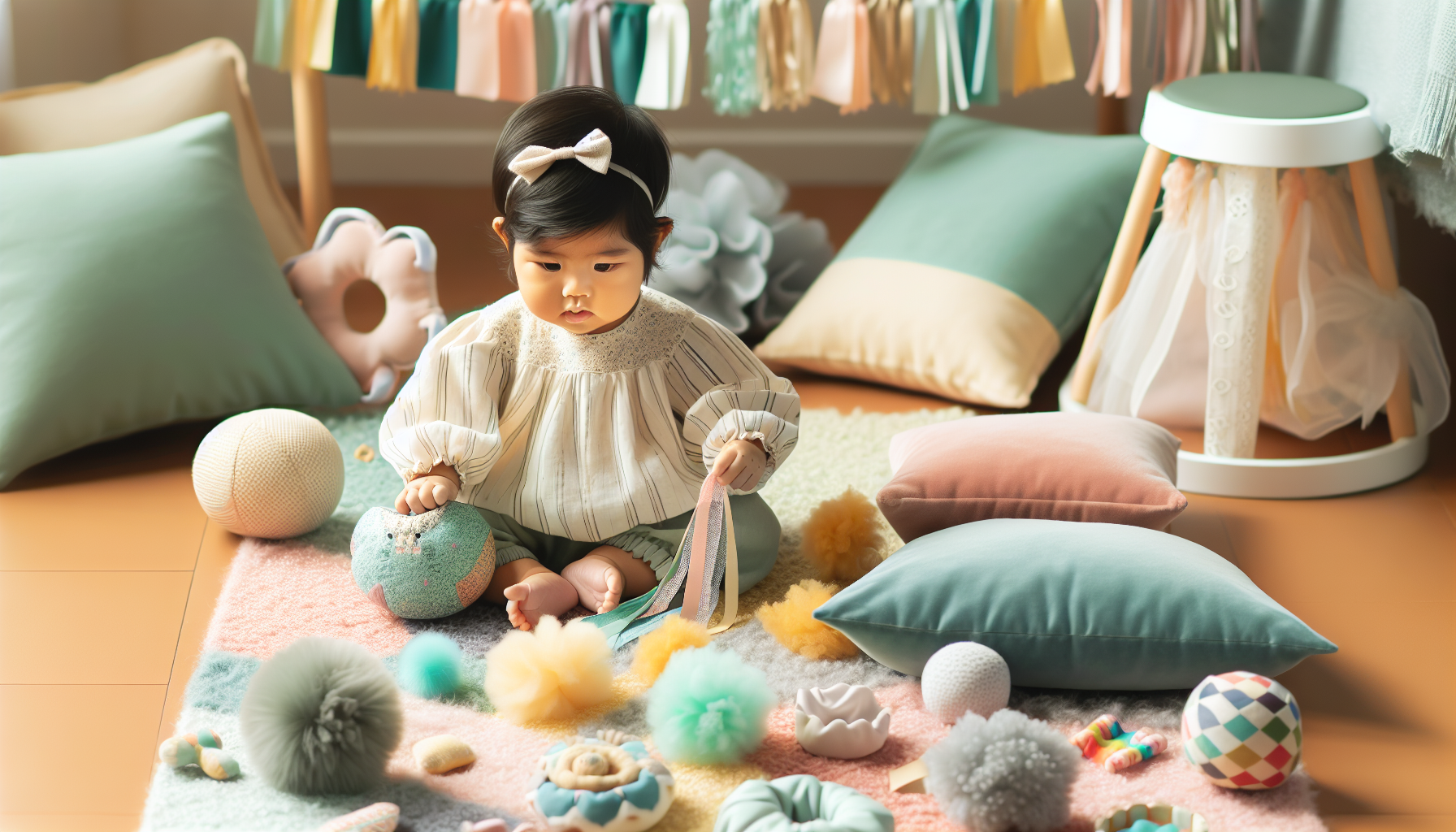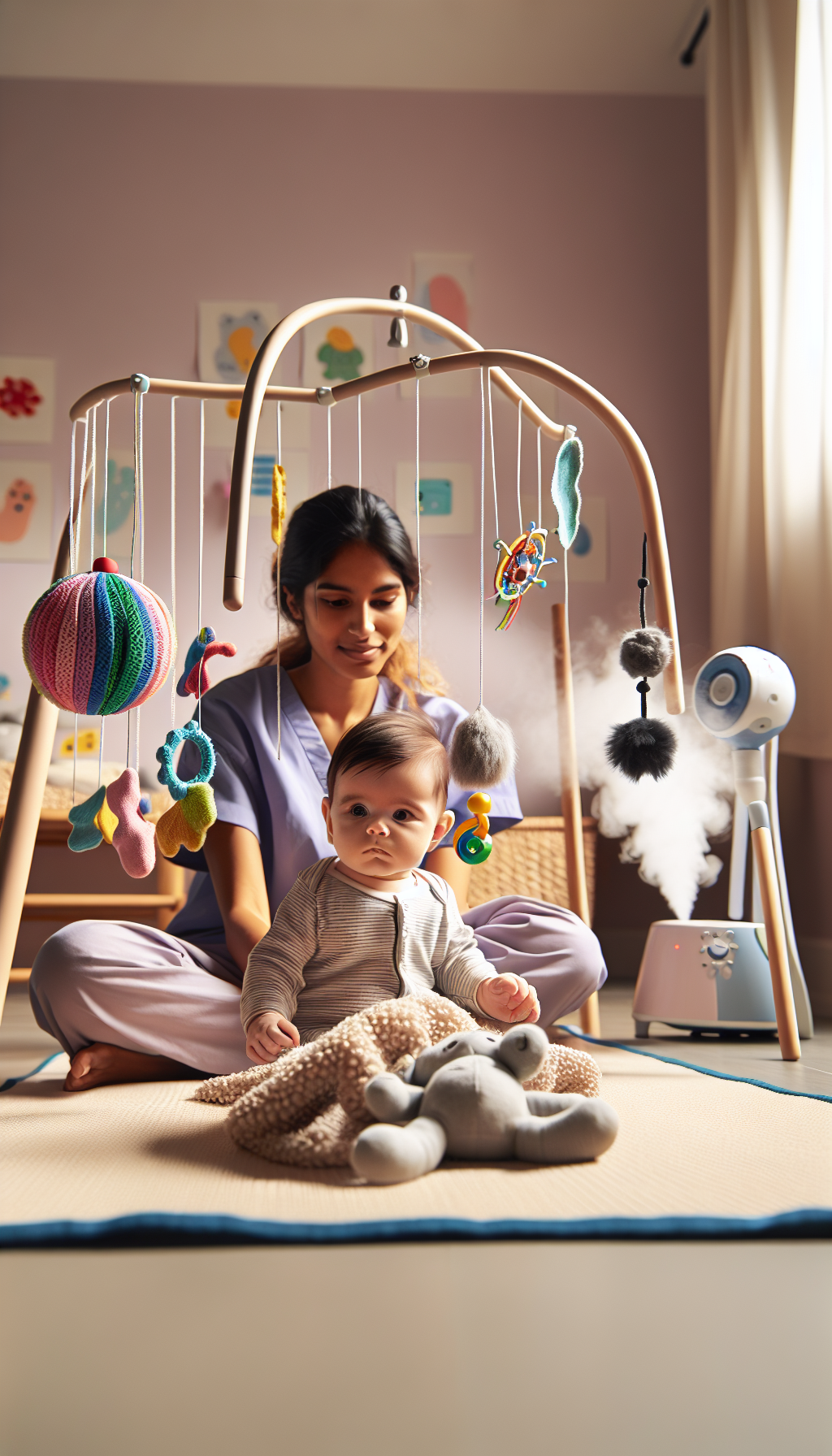The first years of life are a critical period for sensory development in infants. It’s a time when they are learning to interpret the world through their senses — sight, sound, touch, taste, and smell. Sensory development is a vital aspect of growth, as it lays the foundation for all other areas of learning, including sensory health, which is essential for a child’s overall well-being. This comprehensive guide aims to provide caregivers and parents with insights and strategies to effectively nurture sensory development in their infants.
Understanding Sensory Development
Sensory development refers to the maturing of the five basic senses. This process begins in the womb and continues through early childhood. Sensory experiences not only help infants understand their environment but also support cognitive growth, language development, gross and fine motor skills, social interactions, and emotional regulation.
Sight
Vision is one of the last senses to fully develop. Newborns see best at a distance of 8 to 12 inches — the approximate distance to a parent’s face while being held. To foster visual development, provide high-contrast toys and images, as infants can better discern these in their early months. As they grow, introduce various shapes and colors to stimulate visual learning.
Hearing
Hearing develops during the last trimester of pregnancy, which means newborns come into the world with a readiness to listen. Early exposure to a variety of sounds, including music, language, and everyday noises, can enhance auditory processing. Speaking to your infant in a warm, calm voice and offering toys that produce different sounds can also support hearing development.
Touch
Touch is a powerful sense that is crucial for emotional and physical growth. Skin-to-skin contact, also known as kangaroo care, can stabilize an infant’s heart rate, temperature, and breathing. Providing a safe variety of textures for your baby to feel can stimulate touch receptors. This can include soft blankets, smooth wooden toys, and textured books.
Taste and Smell
Taste and smell senses are closely linked and are key for developing preferences and aversions. Introducing a variety of flavors and aromas can broaden an infant’s palate and olfactory experiences. This can be done through breastfeeding, which offers a range of flavors based on the mother’s diet, and later through diverse solid foods.
Strategies to Enhance Sensory Development
Multi-Sensory Environments
Creating a multi-sensory environment can enhance sensory processing and integration. This involves a space where infants can be exposed to various sensory stimuli in a controlled manner. Consider incorporating elements that engage different senses — such as a baby gym for visual and tactile exploration, or a soft music player for auditory stimulation.
Sensory Play
Sensory play is critical in early development. It includes activities that stimulate an infant’s senses and can support learning and creativity. Simple activities like playing with water, feeling different fabrics, or exploring age-appropriate sensory bins filled with safe objects can be beneficial.
Reading and Storytelling
Reading aloud to your infant is an excellent way to promote auditory and language development. Choose books with bright pictures and varied textures to read daily. Storytelling can also introduce rhythm, tone variations, and the sounds of language, which are important for auditory discrimination.
Outdoor Exploration
Spending time outdoors exposes infants to a wide array of sensory experiences. The natural environment offers unique sights, sounds, and textures not found indoors. From the feeling of grass under their fingers to the sound of birds chirping, outdoor exploration significantly contributes to sensory development.
Encouraging Movement
Physical movement and exploration are essential for sensory integration. Activities that involve reaching, crawling, and later, walking, help infants learn about their bodies and the space around them. This develops their vestibular system, which is responsible for balance and spatial orientation.
The Role of Sensory Health
Sensory health is a holistic approach that encompasses the well-being of all the senses. Ensuring that infants have a healthy sensory environment can prevent issues such as sensory processing disorders. For more in-depth information on sensory health, you can explore articles like Innovative Sensory Room Features for Enhanced Therapy and The Importance of Sensory Play in Special Needs Education.
Additional Resources
To further support the points made, here are some niche and specific resources:
- Sensory Stimulation and Early Child Development offers insights into how sensory experiences affect early childhood development.
- The Role of Play in the Overstimulated Child provides an interesting perspective on balancing sensory stimulation.
- Improving Early Child Development with Words highlights the importance of auditory and language development in infants through verbal engagements.
Conclusion
Fostering sensory development in infants is a multifaceted task that requires attention and care. By understanding the sensory needs of infants and engaging in activities that stimulate their development, caregivers can ensure that their little ones have a strong foundation for future learning and growth. Remember to introduce new stimuli gradually and observe your infant’s responses, as every child is unique in their development.
With the right approach and resources, parents and caregivers can provide an environment that nurtures all aspects of an infant’s sensory development, leading to healthier and happier childhoods.



